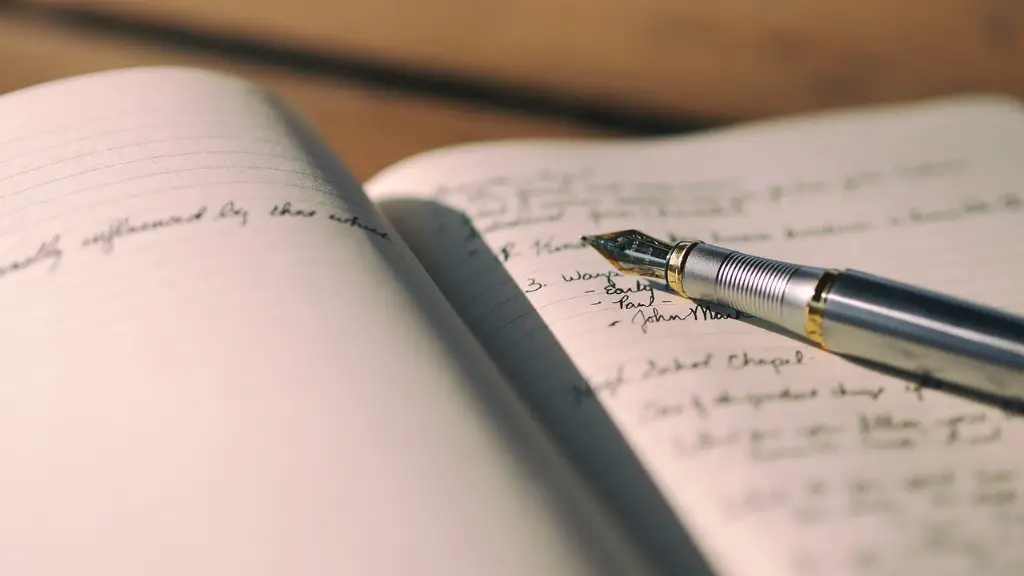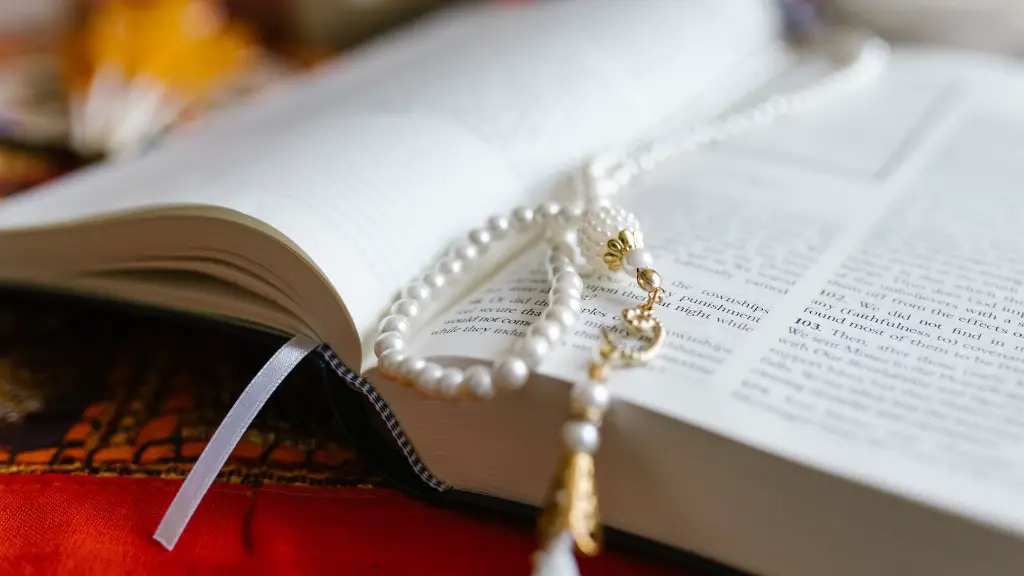What is a connotation in poetry? A connotation is an emotional association of a word, phrase, or situation that goes beyond its literal definition. In poetry, it is the exploration of the emotional and associative implications of words and phrases that helps to bring the poem to life. Often, a poet will use connotation to reveal a deeper, more nuanced meaning than what is explicitly expressed.
Connotations in poetry can be used to evoke certain emotions and create a more powerful impact of a poem, allowing it to affect the reader on a more profound level. These connotations can take the form of different layers of allusions, metaphors, symbols and signs.
An example of connotations in poetry can be found in Pablo Neruda’s ‘Tonight I Can Write’, where he uses the metaphor of water for sorrow:
“The night is shattered and the blue stars shiver in the distance. The patch of sky glassed in my eyes has turned to tears.”
This poem speaks of the sorrow that is felt in the night, and Neruda expresses this feeling of sorrow through the image of a shattered sky and blue stars shivering in the distance. In this image, the stars represent tears and the shattered glass communicates a feeling of despair. Neruda is able to use the connotation of water to express his sorrow and evoke a powerful emotion in the reader.
Connotations can also be used to create an atmosphere in a poem. For example, in Agard’s poem ‘Half-Caste’, the connotations are used to create a feeling of oppressive segregation:
“You wander through a world classed as ‘half-caste’; as if the dividing lines between dark and light should probe too deep for you to last.”
The idea of wandering through a ‘half-caste’ world carries the connotation of being benighted and isolated. The image of the ‘dividing lines’ between ‘dark and light’ leads to the feeling of being trapped in a society that discriminates against you. These connotations of darkness and oppression make it clear to the reader the struggles faced by marginalized individuals in society.
Social Implications of Connotation in Poetry
Connotations in poetry can also be used to create a vivid and powerful understanding of a certain social issue or political situation. For example, in Langston Hughes’s poem ‘Dream deferred’, he uses multiple connotations to communicate the frustrations of people in the contexts of racial discrimination:
“What happens to a dream deferred? Does it dry up like a raisin in the sun? Or fester like a sore— And then run?”
By employing the connotation of a ‘dream deferred’ and comparing it to a raisin in the sun, Hughes is able to communicate the sense of a slow and lasting frustration that comes with the oppressive racial environment. The additional connotation of ‘fester like a sore’ brings the image of a wound that is too deep to heal, revealing the bleak fate of those affected by racial discrimination.
Rhetorical Effects of Connotation in Poetry
Connotation can also be used in poetry to create a particular rhetorical effect. By using connotation to imply a different meaning than what is stated literally, a poet is able to engage the audience on a deeper level and convey a more complex message.
In Gwendolyn Brooks’s poem ‘We Real Cool’, the connotation of the title helps to create the desired rhetorical effect:
“We real cool. We/Left school.”
By using the phrase ‘we real cool’ Brooks is able to imply the attitude and rebellious nature of two young boys who have chosen to drop out of school. This phrase has a more profound and impactful meaning, one which communicates the inevitable consequences of their choice to leave school.
Cultural Significance of Connotations in Poetry
Connotations in poetry are also used to convey a sense of cultural significance and importance of certain values, beliefs, and ideas. For instance, W.S. Merwin’s ‘For the Anniversary of My Death’ uses powerful connotations to communicate the nature of death and the importance of life:
“Every year without knowing it, I have passed the day when the last fires will wave to me, and the silence will set out, ”Tireless traveller, If it is already morning, why do you] …asleep?”
The metaphor of death as a ‘tireless traveller’ and life as a morning ‘already passed’ conveys the idea that life passes quickly and death is inevitable. This powerful connotation creates a sense of urgency and appreciation of life, making the cultural value of living life to the fullest evident to readers.
Implications of Connotation in a Contemporary Poetry
Connotations in poetry can also be used to reflect the changing values and attitudes of contemporary authors. For example, in Patricia Smith’s poem ‘My Feet Begin to Dream’, the connotation of the title speaks to the contemporary issues of freedom and poverty:
“The only dream my feet remember: hard lines in cold pavement freezin’ in the shadows of the skyscrapers…”
The phrase ‘The only dream my feet remember’ carries a sense of longing and despair, emphasizing the plight of those living in poverty and the desire for a better, more fulfilling life. The use of this connotation allows the reader to connect with the underlying emotions in Smith’s poem and experience it on a deeper level.
Language and Connotation in Poetry
Language is an important factor in creating connotations in poetry. By carefully selecting words with specific connotations, writers can create emotional and psychological effects in their poems. For example, in Derek Walcott’s ‘Ruins of a Great House’, Walcott uses the metaphor of a lighthouse to communicate a sense of impending danger:
“And the towers of the lighthouse Looked out to sea as if recalling The sorrow of some vanished armada.”
The use of the word ‘armada’ carries the connotation of a powerful and dangerous force, while the image of the ‘tower of the lighthouse’ brings to mind a sense of guardianship and protection. By combining these two connotations, Walcott is able to create the feeling of impending danger and a need for caution.
Structure and Connotations in Poetry
The structure of a poem can also have an impact on the connotations of the poem. By using certain poetic techniques, a poet is able to create the desired connotation of the poem. For instance, in Lucille Clifton’s poem ‘Homage to My Hips’, she uses a particular structure to communicate her feelings of empowerment:
“These hips are big hips. They need space to move around in. They don’t fit into little petite places.”
The repetition of the phrase ‘these hips’ and the use of anaphora helps to create an atmosphere of conviction and strength. This structure and the connotations it creates emphasizes the importance of accepting and embracing one’s body, regardless of societal pressures.
Conclusion of Connotations in Poetry
Connotations are an important element in poetry and can be used to great effect to evoke emotion, create atmosphere, and convey meaning. Poets often use connotations to explore the deeper, emotional implications of words, to engage their audience on a deeper level and emphasize their message. In this way, connotations are a powerful and effective tool for poets to use in their work.





